Going camping in Iceland is one of the best ways to immerse yourself in the country’s natural environment, and it’s the cheapest way to travel around the island. However, there are certain rules you must follow, so it’s a good idea to review some Iceland camping tips.
We run Iceland photo tours every year and always take a few days before or after the tour to camp on the island, so we’ve had the opportunity to visit many campsites in Iceland.
Besides, since there are so many things to do in Iceland, saving money on your accommodation allows you to do more guided tours and other paid activities, something I always recommend!
If you want to enjoy an Iceland camping trip, keep reading because in this guide you’ll find:
- Iceland campgrounds map
- How the Iceland Camping Card works
- Best camping sites in Iceland
- Is wild camping in Iceland legal?
- Camping rentals in Iceland
- Tips for camping in Iceland
- Camping in Iceland in winter
Things you need to know before camping in Iceland
Camping in Iceland is a unique experience, and you can find official campsites throughout the island. That said, wild camping in Iceland is prohibited in most cases.
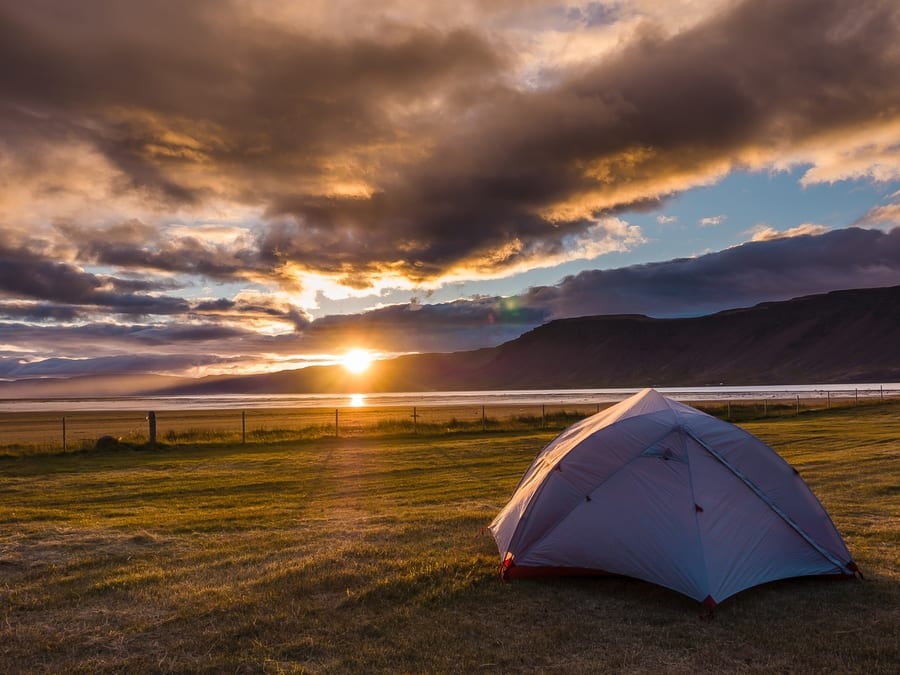
Things you need to know before camping in Iceland
If you go during peak season, it’s best to reserve a campsite in advance, as they fill up quickly in the summer. Also, if you’re going to spend most of your time at Iceland’s campsites, it’s worth it to get a Camping Card, as it’ll save you a lot of money.
Another thing to keep in mind is that many campgrounds in Iceland are closed during the winter; most are only open from May to September. Fortunately, some are open year-round, so I suggest doing some research beforehand if you plan to travel around Iceland in a camping van or RV in the winter months. Overnight parking is illegal outside of the designated campsites.
Iceland campgrounds map
If you are not quite sure where to camp in Iceland, I suggest keeping the following map close at hand.
This Iceland campgrounds map will show you all the sites that are open year-round, as well as the ones that are open only during the summer months. You’ll also be able to see all the Iceland campsites included in the Camping Card.
As you’ll see, there are places to camp in Iceland all around the island, so you’ll have no problem finding a spot to spend the night, whether it’s in a tent, campervan, or RV.
Iceland Camping Card
The Iceland Camping Card is designed for those who want to camp for the entirety (or most) of their trip. With this card, you’ll have access to dozens of campgrounds in Iceland for up to 28 days.
You can use this card if you’re camping in an RV, campervan, or tent. Moreover, each card covers 2 adults and up to 4 children under 16, so it’s ideal for couples and families.
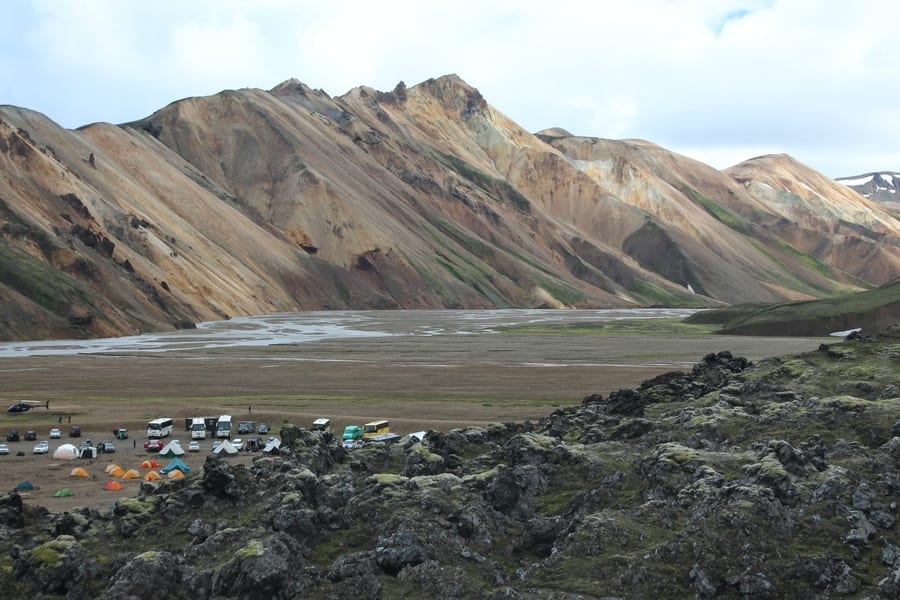
Iceland Camping Card
While there are tons of advantages to the Camping Card, be aware that it’s only valid from May to mid-September, when all of Iceland’s campsites are open.
The Camping Card costs about USD 195, and campgrounds in Iceland tend to charge about 1000-2000 ISK (USD 8 -16) per person/night. So, as long as two adults are camping for 5-10 days, (for families it’s even fewer days), the card is cheaper than booking individually at each campground.
Best camping sites in Iceland
Although there are many campsites in Iceland, we have a few favorites that we know you’ll love. These are the best camping sites in Iceland:
- Hellisandur Campsite: Located within the Sandahraun lava field on the Snaefellsnes Peninsula, this campground has toilets, showers, sinks, and electricity. The best thing about the Hellisandur campsite is its location; it’s close to the Snæfellsjökull glacier, which is surrounded by great hiking trails and beaches.
- Geysir Campsite: This campsite, located in the Golden Circle, is surrounded by nature. It’s also very close to a geothermal area, so it’s one of the best places to camp in Iceland. It has showers, toilets, electricity, and a children’s area, making it perfect for families.
- Brennisteinsalda Campsite: Another Icelandic campsite that we’ve been to and highly recommend is the main campsite at Landmannalaugar, in the Icelandic Highlands. It’s one of the best places to camp, as the spectacular landscape here encompasses beautiful rhyolite mountains, canyons, lava rock formations, volcanoes, and hot springs. However, it’s only open in the summer and you need a 4×4 to get there because it’s in the Highlands.
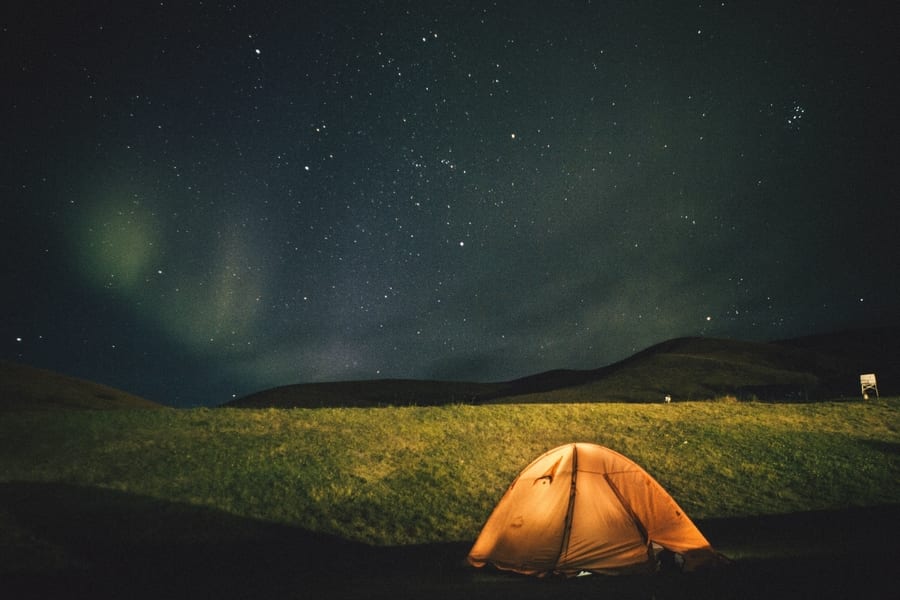
Best camping sites in Iceland
- Skógar Campsite: Situated right in front of the Skógafoss waterfall, it’s no surprise that this is one of Iceland’s most popular campgrounds. If you get a good spot, you can listen to the roar of the waterfall as you fall asleep. Whenever we have the chance, we always go to this campsite. Not only is Skógafoss one of the must-see attractions in Iceland, but the grounds also have toilets and electricity.
- Skaftafell Campsite: If you’re looking for a place to camp in Iceland with good facilities, I recommend this campsite in Skaftafell National Park. The campground has a restaurant, bathrooms, showers, electricity, and other amenities. The location is also great, as there are several nearby trails, like the one to Kristínartindar via the Svartifoss waterfall, which is considered one of the best hiking trails in Iceland.
- Höfn Campsite: Finally, you’ll find this campsite in Höfn, near Stokksnes Beach. It also has toilets, a shower, and electricity, and it’s located near the municipal swimming pool. Best of all, it has a common kitchen, so you can prepare your own food there. That said, if you’re in Höfn, you must try the lobster baguette at Hafnarbúðin, my favorite restaurant in all of Iceland.
Free camping in Iceland – Is wild camping in Iceland legal?
Keep in mind that in 2015 the Icelandic Department of the Environment announced that free camping in Iceland was prohibited outside of designated areas if traveling via RV, motorhome, or campervan.
Those who are camping in a tent may spend the night in non-designated areas if there aren’t any campsites nearby, as long as they’re not staying in a protected area or private property without the owner’s permission.
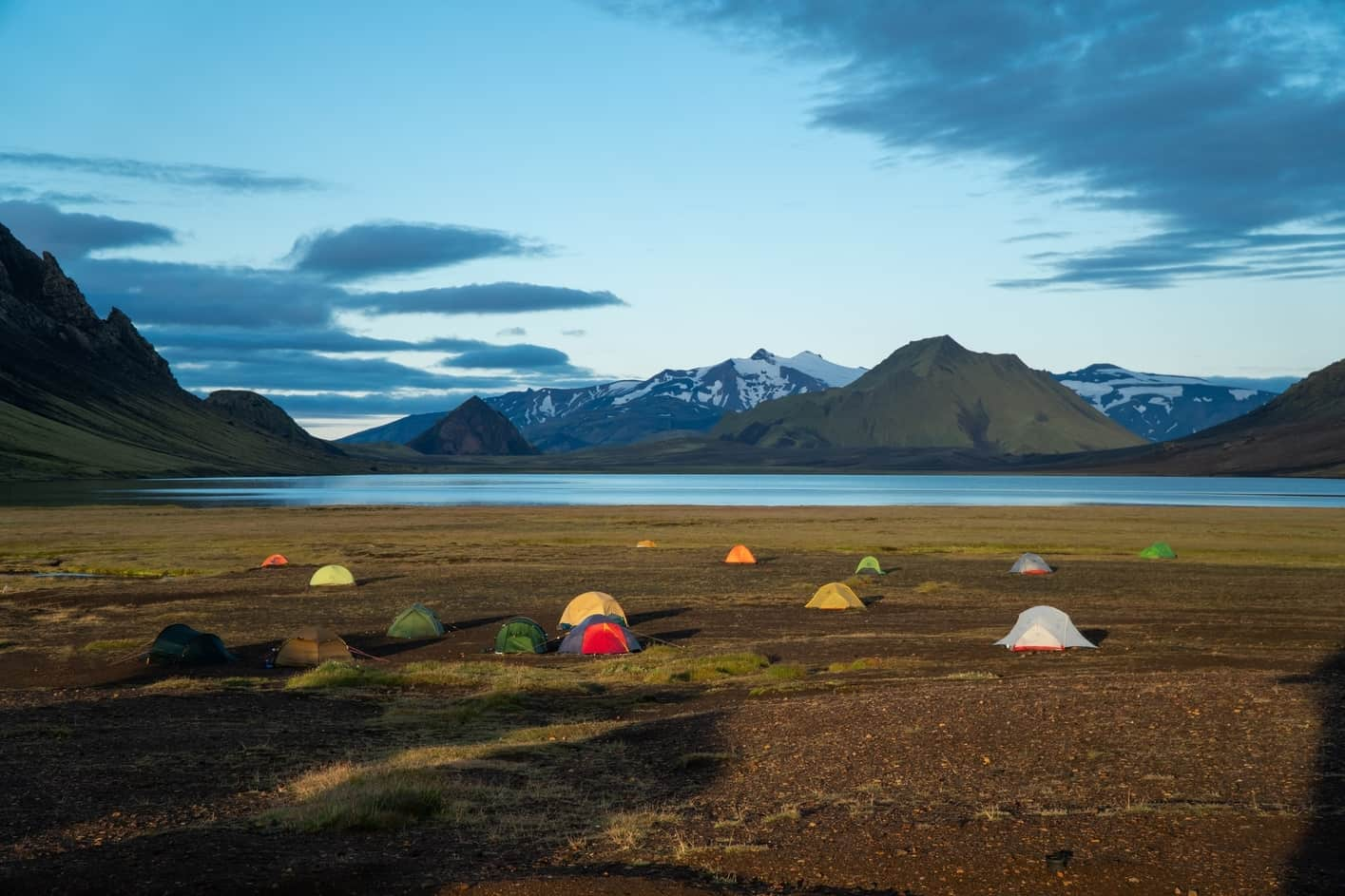
Free camping in Iceland – Is wild camping in Iceland legal?
If you’re traveling in an RV or campervan and want to spend the night in it, you must be staying at an official Icelandic campsite. Besides, you can camp on privately-owned land if you have permission from the owner.
Despite these regulations, there are many campgrounds in Iceland spread throughout the island, as you have seen on our map. So don’t worry; you will have no problem finding a place to stay. Just be sure to do your research and reserve your spot in advance, especially if you’re camping in Iceland in summer, the peak season.
Protected areas where it is illegal to camp in Iceland
If you want to go wild camping in Iceland with a tent, make sure that you’re not spending the night in one of these protected areas since it’s illegal:
- Álafoss
- Blábjörg á Berufjarðarströnd
- Bringur í Mosfellsdal
- Dimmuborgir
- Dyrhólaey: You can camp and stay overnight only with permission from the Icelandic Department of the Environment.
- Fjallabak: You can camp and stay overnight only in marked areas. Hikers can camp alongside marked trails. Elsewhere, you can camp or stay overnight only with specific permission from the Icelandic Department of the Environment.
- Grábrókargígar í Norðurárdal: Camping and overnight stays are only allowed with permission from the Icelandic Department of the Environment.
- Herðubreiðarfriðland: You can camp in marked areas. Elsewhere, permission from the Icelandic Department of the Environment is required.
- Hverfjall/Hverfell
- Ingólfshöfði: Camping and overnight stays are only allowed with permission from the Icelandic Department of the Environment and local supervisors.
- Kattarauga
- Kirkjugólf
- Mývatn: Camping and overnight stays are not permitted outside of designated camping areas.
- Seljahjallagil, Bláhvammur, Þrengslaborgir and its surroundings
- Skógafoss: Camping and overnight stays are not permitted outside of designated camping areas.
- Skútustaðagígar
- Snæfellsjökull National Park: Hikers must obtain permission from the National Park. Otherwise, camping and overnight stays are not permitted.
- Ströndin við Stapa og Hellna
- Teigarhorn
- Vatnajökull National Park: Tents and campervans are permitted at the campsite. Outside of the camping area, you can camp with a traditional tent for one night. Groups of three or more tents, however, must ask the ranger for permission.
- Jökulsárgljúfur: Camping and overnight stays are not permitted outside of designated camping areas. However, camping is allowed in the Skaftafell Mountains above elevations of 1,300 feet and at the mouth of the Kjós River.
- Þingvellir National Park: Camping and overnight stays are not permitted outside of designated camping areas.
Iceland camping packing list
If you’re going to camp in Iceland, these are the essentials that you should bring:
- 4 seasons tent (we use this one)
- Special insulating canvas for the floor (we use this one)
- Winter sleeping bag (we use this or these for hikes)
- Inflatable mats (we use these)
- Light for the tent (we like this one)
- Campingaz stove (we travel with this one)
- Warmers (my must-haves are these ones for hands and feet)
- Winter clothes (in our guide on how to pack a backpack for a long camping trip, I share more tips on what kinds of clothes you need for Iceland)
Camping rentals in Iceland
We’re avid campers who love the outdoors, so we’ve got everything you need to camp in Iceland comfortably. Of course, when traveling to other countries, you can’t take everything along for the journey. In these cases, you might want to consider the option of Iceland camping rentals.
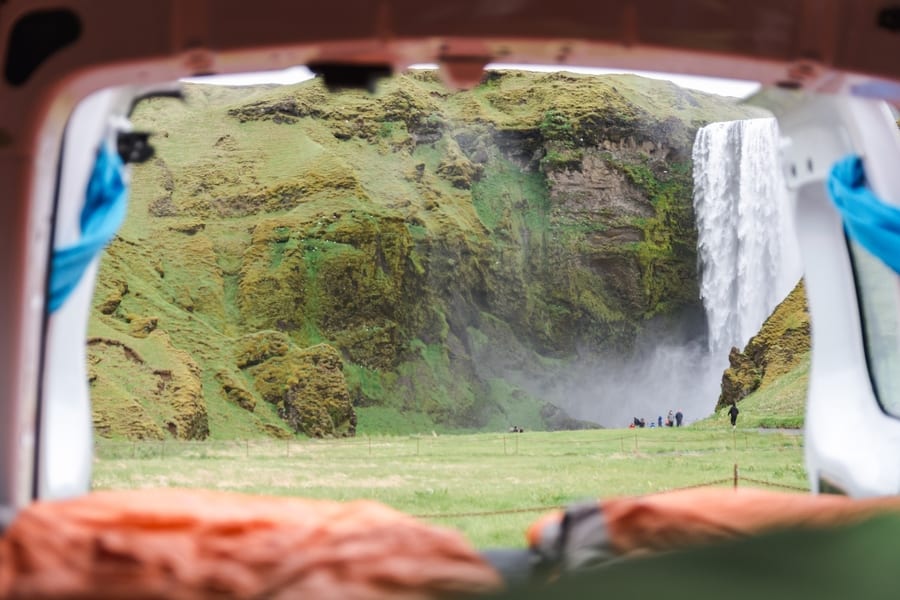
Camping rentals in Iceland
If you’re going to explore this country, I recommend visiting this website, where you can rent sleeping bags, gas stoves, tents, kitchen equipment, hiking apparel, GPS units, and more. I strongly encourage you to rent anything that you can’t carry with you or that would be too cumbersome on an airplane or in your luggage.
Tips for camping in Iceland
The experience of camping in Iceland can be incredible, but if you’re not used to sleeping outdoors and find yourself in unfavorable conditions, it can be a real nightmare. To avoid an uncomfortable situation like that, I have a few tips to help you fully enjoy your Iceland camping trip:
- If you’ve never camped before, I recommend looking for an Iceland campsite that’s near a hotel just in case you find that camping outside isn’t your thing. Also, be sure to check the weather forecast since excessive rain and wind can make the experience less enjoyable.
- One of the things worth taking with you is proper insulation for your tent. Iceland is a country with a variable climate that’s not always predictable, although it tends to be humid. If you don’t want to wake up soaked, you’d better get good insulation. In a pinch, you can use newspapers and put them under your tent.
- If you are going to camp in Iceland during the peak season, reserve a spot in advance, especially if you plan to stay at one of the more popular campgrounds.
- Most camping sites in Iceland require you to pay to use the shower, so keep some spare change on you.
- Remember to bring an adapter for the car so you can charge electronic devices, like your camera and phone.
- Even if you go camping in Iceland in summer, you should bring warm clothes and warmers for your hands and feet.
- Be very careful if you camp in an area where there are horses. A friend of ours came back from photographing the Northern Lights to find their tent had been trampled.
- If you can’t make it without your morning coffee or tea, or if you plan to bring camping freeze-dried food, rent or bring a Jetboil so you can heat some water.
- There are a few essential apps and websites that you should use while camping in Iceland. Use Vedur.is to see the weather forecast, Road.is to view current road conditions, Maps.me to download any maps of Iceland you need, and the My Aurora Forecast app (Android and iOS) to know if the KP rises and the Northern Lights are visible.
If you follow these tips, you should have no problem camping in Iceland. Of course, if you find that you’re uncomfortable and not enjoying yourself, there’s nothing wrong with heading to a hotel. I’ve even got a guide to the best places to stay in Iceland.
Campervan – Easy camping in Iceland in winter
Camping in Iceland in winter isn’t the best option, as the winter months are quite harsh. Besides, most campgrounds close for the winter, so you could find yourself without a place to pitch your tent.
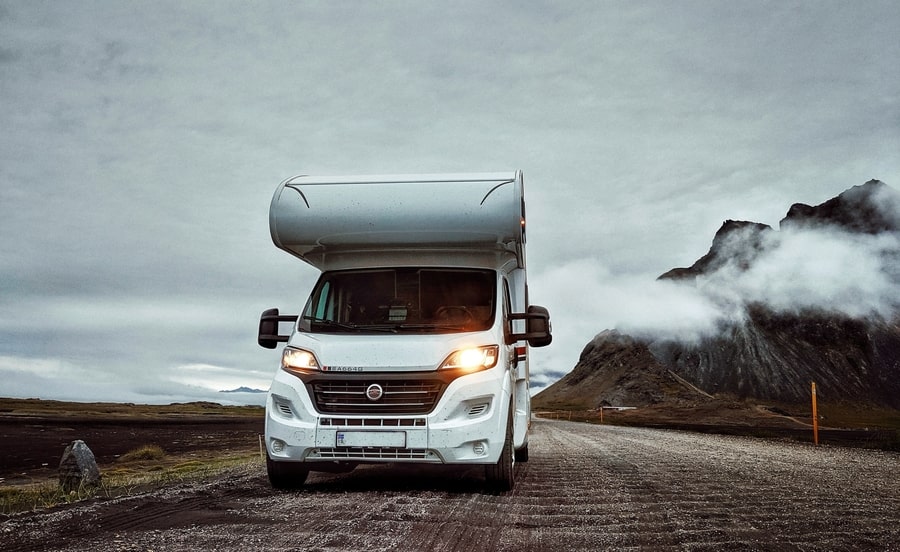
Campervan – Easy camping in Iceland in winter
If you’re going to travel to Iceland in the winter and you’d like to go camping, it’s best to do so in an RV or campervan so you won’t have to sleep outside in harsh weather. Take a look at our guide on how to rent a car in Iceland, and use the website below to search for a rental that fits your travel dates:
I also recommend reading our guide on how to drive in Iceland since, in winter, you’ll have to take extreme precautions due to the state of the roads. There are even some areas, like the Highlands, that close down during this time of year.
As a quick tip, check that your vehicle has proper snow tires and 4-wheel drive. Also, remember to regularly check the weather forecast and road conditions. Lastly, make sure that the campsites you plan on visiting will be open during the winter months.
FAQ – Camping in Iceland
Here are the most frequently asked questions about how to camp in Iceland. Of course, if you have any other questions, you can leave me a comment at the end of this article.
That’s all from me! I hope this guide helps you make the most of your Iceland camping trip. If you have any questions, you can leave a comment below, and I’ll do my best to help. Enjoy exploring the campsites in Iceland!
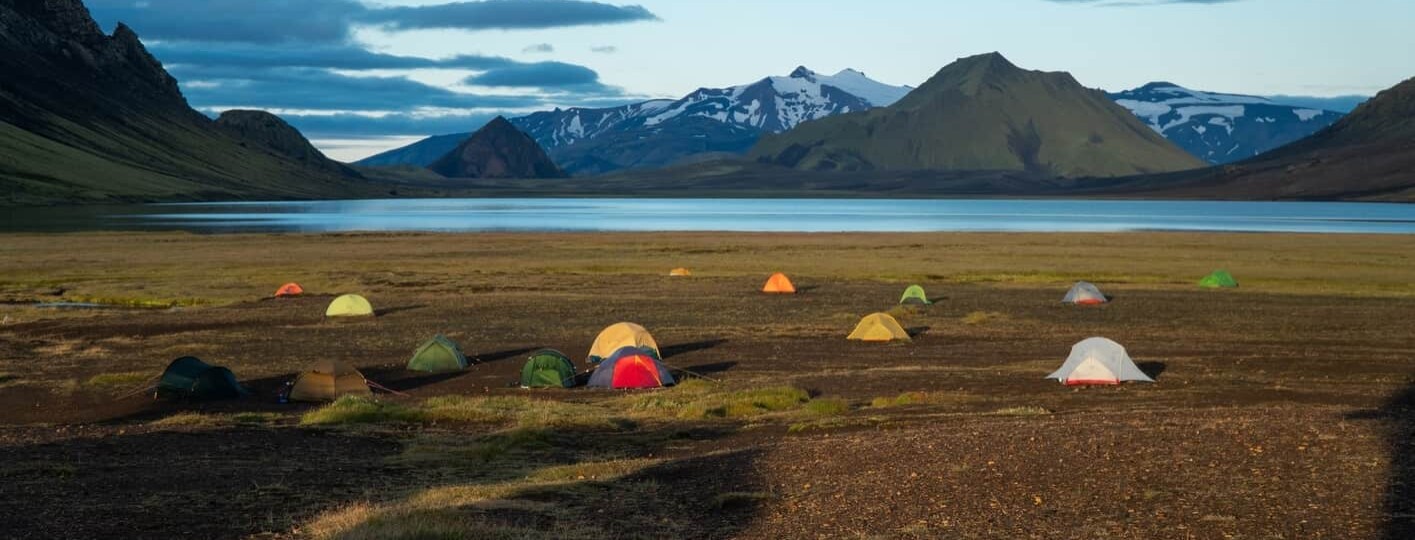
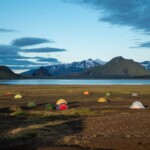
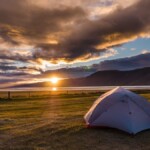
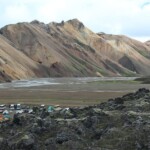
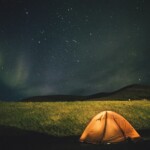
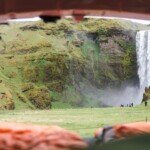
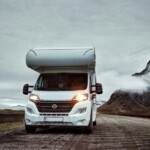
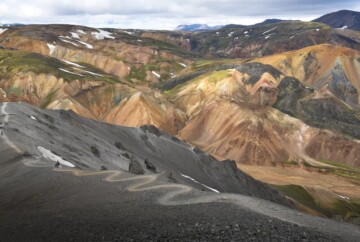
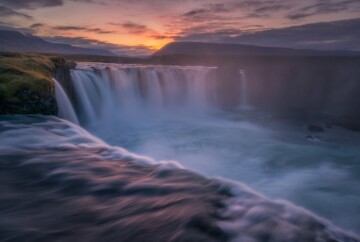
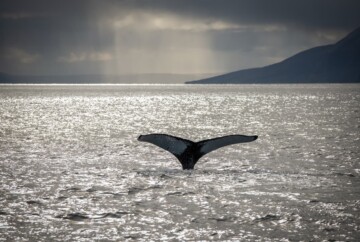
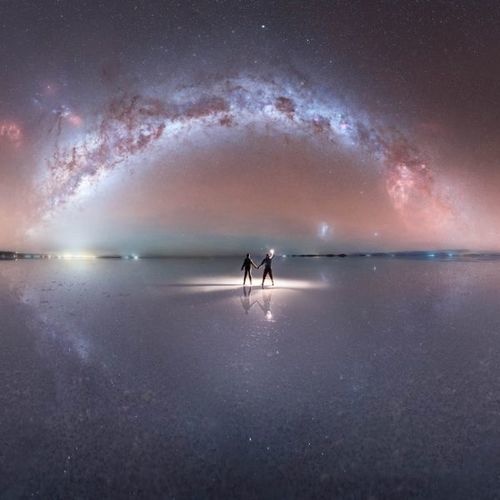
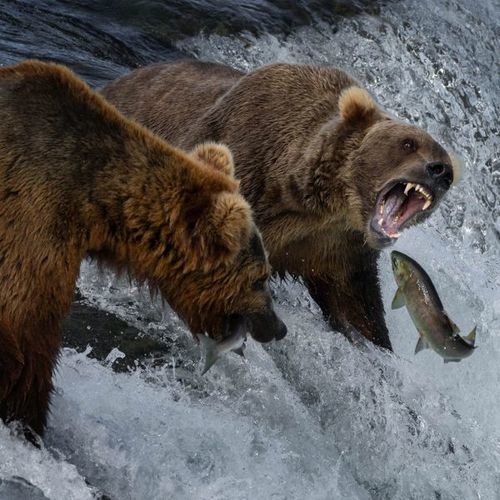
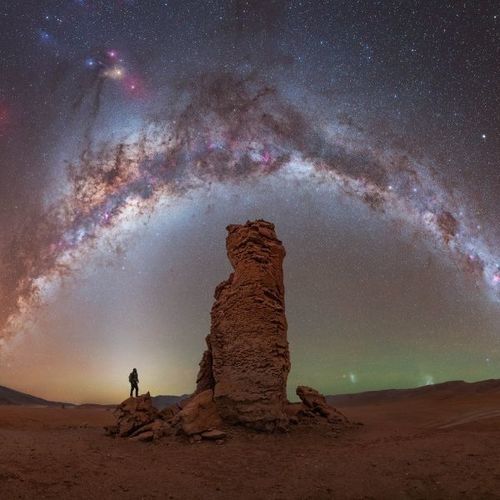
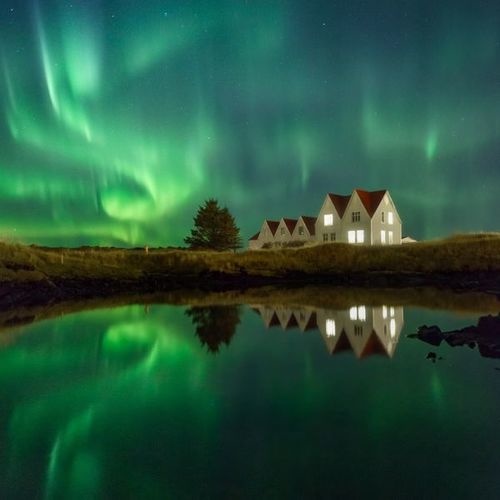
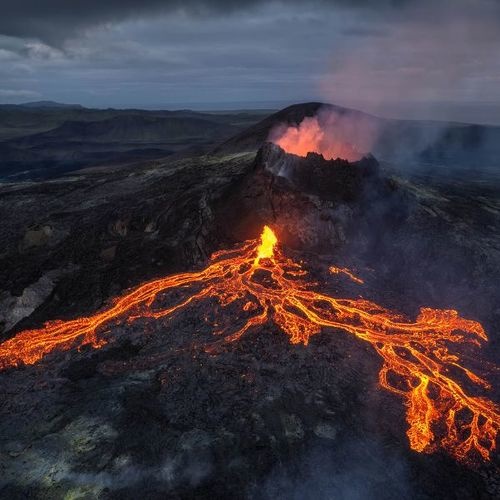
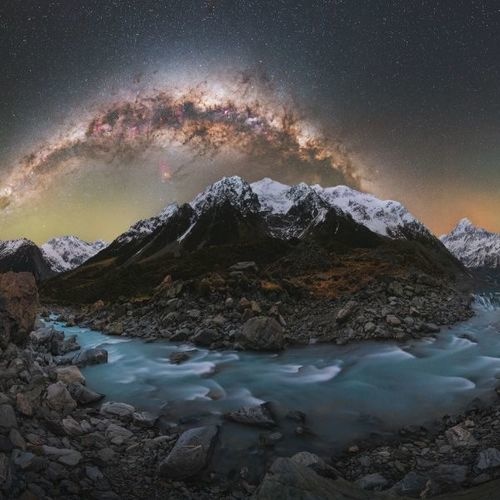
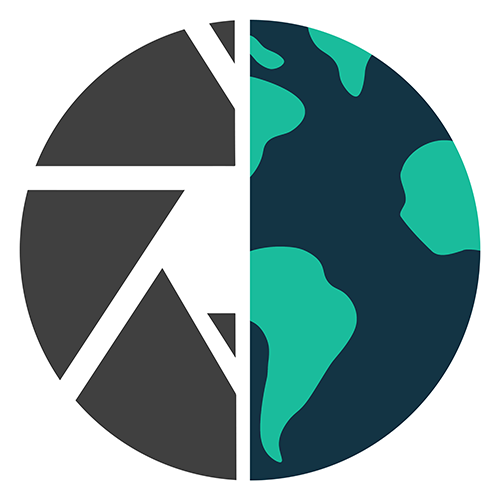
I could not find the guide for the map to know which campsites take the camping card. Can you please direct me as to the legend
Hi Sandra,
You can find a map with all the campgrounds included in the Iceland Camping Card here.
Let me know if you have any other questions,
Ascen